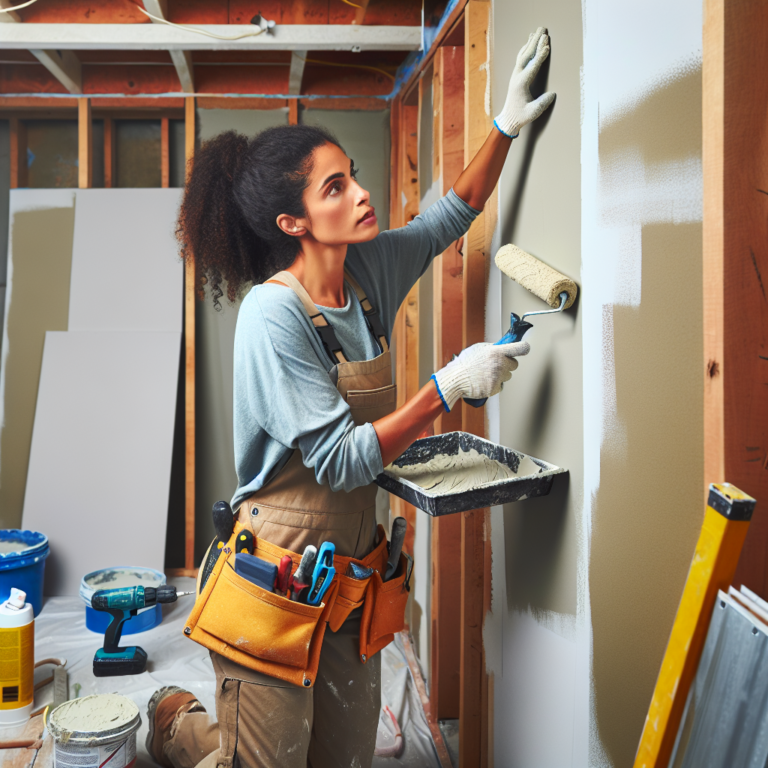The Pros and Cons of Using Drywall in Bathrooms
When I decided to remodel my small guest bathroom, I faced a crucial choice: what material to use for the walls? Being an avid DIY enthusiast with a few projects under my belt, I quickly turned to drywall, a staple of countless home renovations. However, as I embarked on this journey, I learned that using drywall in bathrooms is not as straightforward as it seems. Here, I’ll dive into the pros and cons of using drywall in bathrooms, sharing my experiences, insights from industry professionals, and practical advice for homeowners considering a similar project.
Drywall: A Popular Choice for Interior Walls
First, let’s establish why drywall, also known as gypsum board or plasterboard, is so widely used in home construction. Drywall offers several advantages:
- Cost-Effective: Drywall is relatively inexpensive compared to other wall materials.
- Ease of Installation: It is lightweight and easy to cut, making it suitable for DIY projects.
- Smooth Finish: Once painted, drywall provides a clean and modern look.
- Fire Resistance: Gypsum is naturally fire-resistant, which can add an extra layer of safety to your home.
However, when it comes to bathroom applications, there are additional considerations.
The Pros of Using Drywall in Bathrooms
1. Cost Efficiency
In my bathroom remodel, the cost of materials played a significant role in my decisions. Regular drywall, often priced around $10 per sheet, is a far more budget-friendly option than alternatives like tiles or plaster. Especially if you are working on a small bathroom, this cost efficiency is hard to overlook.
2. Simple Installation Process
The installation process of drywall can be straightforward, particularly for those with some DIY skills. I remember spending a weekend putting up drywall, and aside from a few learning curves, the process was less labor-intensive compared to more complicated options like tiles. To ensure a seamless finish, I used 1 1/4" screws to secure the drywall to the studs—an affordable and crucial choice for a sturdy installation. You can find high-quality screws here.
3. Flexible Design Options
With drywall, you can create various textures and paint finishes to match your home’s aesthetic. I opted for a soft, bright blue paint that reflects light well, making my small bathroom appear larger and more inviting.
4. Smooth Surface for Fixtures
If you’re planning to hang heavy fixtures like mirrors or towel racks, drywall provides a solid base. Using the right anchors allows for secure installations, which is essential in a high-traffic area like a bathroom.
The Cons of Using Drywall in Bathrooms
1. Moisture Vulnerability
One of the biggest downsides of using standard drywall in bathrooms is its susceptibility to moisture. Bathrooms often experience high humidity levels, which can lead to mold growth and drywall deterioration. To mitigate this issue, I learned that mold-resistant drywall options are available, specifically engineered for moisture-prone areas. Investing in products like the 1/2" Mold Resistant drywall, available here, can go a long way in preventing these problems.
2. Durability Issues
In high-traffic areas, drywall can be more prone to damage than other materials. I had to be particularly careful during the installation process—one misjudged swing of a hammer would leave a dent. Unlike tiles, which can withstand the test of time, drywall may require patches or repairs more frequently.
3. Heat Sensitivity
Direct heat sources, such as from heated towel racks or radiant floor heating, can affect drywall integrity over time. This is especially true if insulation is not adequate. My contractor advised me to ensure that any heat sources were carefully positioned away from direct contact with drywall.
4. Conditional Use
As I delved deeper into discussions with construction professionals, it became clear that the suitability of drywall could depend on bathroom layout. For instance, using drywall in a shower stall is not advisable unless specifically covered with water-resistant materials, as moisture exposure can lead to significant long-term issues.
Tips for Using Drywall in Bathrooms
If you’re set on using drywall in your bathroom, here are some practical tips I found helpful:
-
Opt for Moisture-Resistant Drywall: Whenever possible, choose moisture-resistant varieties like Green Board or Cement Board, especially near shower areas.
-
Proper Ventilation: Install an exhaust fan to decrease humidity levels in your bathroom, reducing moisture build-up in the drywall.
-
Use Quality Primer & Paint: Invest in a good primer and paint designed for bathroom environments. This helps create a barrier against moisture.
- Regular Maintenance: Inspect for signs of mold or water damage routinely. Catching issues early can save you from more extensive repairs later.
Conclusion: Is Drywall the Right Choice for Your Bathroom?
Ultimately, the decision to use drywall in your bathroom will depend on your specific circumstances, budget, and design goals. While it offers an affordable and flexible option for wall construction, you must be aware of its limitations, particularly regarding moisture exposure. Consider consulting with professionals or doing thorough research to assess your specific needs.
If you’ve remodeled or thought about remodeling a bathroom using drywall, I’d love to hear your experiences. What materials did you choose, and how has the outcome been for you?
DIY Resources and Recommendations
For further reading and tips, check out:
Share & Resources
If you found this guide helpful, please share it on Pinterest, Facebook, or Reddit! Your support helps others find useful drywall tips for bathroom renovations.
Together, let’s empower our communities with the knowledge to improve our homes, one drywall project at a time!

